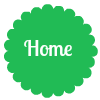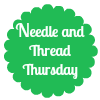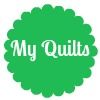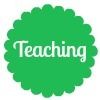Okay quilters! I'm going to make this really easy (even if it is wordy). Here is a list of everything you will need to make the Brick Wall quilt. I'll divide my list into parts, so you can choose to either purchase everything at once, or a little bit along as you get to the step where it is needed. I'll start will all of the tools and "extra stuff" and discuss fabric choices last. Here we go!
The great thing about these things is that once you buy them once, they last for years!
1. Sewing machine with walking foot and 1/4 inch foot- don't freak out if you don't know what these feet are for. I'll show you! I'll even help you figure out what to get if your sewing machine doesn't already have one. Just let me know what kind of machine you have and we'll figure it out!
***Technically, you don't need this at the very beginning, but it's pretty important, so it gets to be listed first.
Fabric Cutting Tools/Materials-
2. Rotary cutter- my favorite is my trusty Olfa 45mm blade. Nothing fancy, but easy to change the blade and never lets me down.
3. Cutting mat- as big as you can afford and/or have space for! Again, Olfa is a great brand, but I had a June Tailor mat before my Olfa and it lasted for years.
4. Quilting Ruler- (for cutting fabric) I have a 3 inch ruler and a 5 inch ruler (widths). I tend to use my 5 inch more often, but choose whatever feels most comfortable for you!
Piecing Tools/Materials-
**This is when you will need your 1/4 inch foot.
**This is when you will need your 1/4 inch foot.
5. Spray starch- yes, I consider it a tool and a necessity. I will not make a quilt without it. I like Faultless Premium Professional starch with the gold cap. I can spray the heck out of my seams and it never flakes. Bonus points also for smelling like fresh laundry! I've heard that Best Press is also good, but I've never used it so I can't verify.
6. Iron and ironing board
7. Thread- I usually use Coats and Clark Dual Duty thread for piecing. If you have a favorite thread brand-great! But I strongly recommend high quality thread that is 100% cotton. I use white or off white in my piecing to be sure it doesn't show through any light fabrics.
8. Seam ripper- just make peace right now with the fact that you'll need it at some point!
9. Scissors- you need a pair of nice, sharp scissors that are only used for sewing. Cutting paper and other things can dull scissors quickly. Then instead of a nice, clean cut, your fabric is a raveled mess, and who wants that? Mine are Fiskars.
Basting Tools/Materials-
10. Quilting safety pins- I use the big ones that look like this-
Some people like the curved ones, and that's fine too. I don't get the little ones because I find them harder to close.
11. Painter's tape (the wider the better)- weird, I know. But you'll see why it's super helpful when we get to this step. :)
12. Batting- I always use 100% cotton batting. The fabric from your quilt top will "stick" to it nicely, keeping your quilting pucker-free. Your quilt top will slide around (between pins) on polyester, and wrinkles/puckers will happen. Warm and Natural is my favorite brand. Since this quilt is bigger than a crib size, you will need a Twin size batting, but we'll have some to trim away.
Quilting Tools/Materials-
**This is when you will need your walking foot.
13. Thread- machine quilting thread is a little thicker than regular thread, so it doesn't break as easily while sewing through the thick layers of a quilt. I usually quilt in white (it really disappears unless your fabrics are really dark), or a color that coordinates with the fabric. Just remember that your quilting thread will show when you choose a color. I buy Coats and Clark machine quilting thread.
Now for the fun part! FABRIC!
You will need 12 different fat quarters or quarter yards of coordinating fabric.
Okay, now hang with me, because I'm going to go off on a little tangent-
What the heck is a fat quarter?? This is something that I didn't understand until probably a year ago. So, here is my best explanation. When you take a bolt to the cutting counter and get 1/4 yard, the person will cut a 9 inch piece of fabric (since a whole yard is 36 inches). Most fabrics are 40-44 inches in total width, so a 1/4 yard is 9 inches by 44 inches.
A fat quarter is still a 1/4 yard, but it is cut wide. In this case, a half yard is cut, so is 18 by 44 inches. Then it is cut in half on the wide side. So, a fat quarter is 18 by 22 inches. Still a quarter yard, but in a more square piece that's great if you are making a bigger quilt block. Fat quarters are the little prepackaged squares of fabric that look so nice and neat in the store.
Imagine cutting a piece of paper into fourths this way (a fat quarter)-
or this way (a regular 1/4 yard)-
Each way yields 1/4 of the paper, but one is much more useable for certain things. Does that make sense?
So, like I said. You need 12 different fat quarters or 1/4 yards of coordinating fabrics. For this particular pattern, either cut is fine- but now you know the difference!
If you want a little more variety, you could choose more than 12, but you'll end up with leftovers (which of course, I love!). Often, I like to add a neutral solid like white or gray with my prints. It gives your eyes a place to rest when looking at the quilt. Whether you do that or not is up to you. Just as long as you have at least 12 different fabrics.
Going to a fabric store and staring at a wall of fabric can be overwhelming. I would suggest sticking with two or three main colors, plus a neutral. For example, the fabric set I've chosen are all pink, teal/green, and white. It was bundled as a set of ten fat quarters, and I'll add white, as well as a soft gray to the mix. The fabrics are called Hyperreal Garden by Pat Bravo for Art Gallery Fabrics. Check it out!
(the dark color is actually a deep green, not black)
It's going to make such a sweet little girl's quilt, don't you think?
When you choose your fabrics, try to get a good variety of light and dark fabrics, a mix of types of fabrics (such as geometrics, stripes, and florals) and an even mix of all of the colors. That will help your quilt look balanced when it's finished.
Of course, if you would rather buy a set of fabric that is already perfectly coordinated, there are lots of places you can get that too! Etsy.com is a great place to find these. Just search "fat quarter bundle" with whatever colors you choose and you should have lots of options. Here are some of my other favorite spots to find fabric (keep an eye out and you can score a great deal on fat quarter bundles)-
I've made quilts with my own "sets" and with professionally coordinated sets, and had great results both ways (but it does take a little practice). Even if you choose to coordinate your own fabric set, I highly recommend taking a look at these online places to get an idea of how professionals put fabrics together. It will help. I promise!
**You'll also need 3.5 yards of fabric for the backing, and 3/4 yard of fabric for binding, but I usually don't choose those fabrics until my quilt top is done. I'm never quite sure what will look best until I see it all done! That's your choice, just keep in mind that you will need it!
**You'll also need 3.5 yards of fabric for the backing, and 3/4 yard of fabric for binding, but I usually don't choose those fabrics until my quilt top is done. I'm never quite sure what will look best until I see it all done! That's your choice, just keep in mind that you will need it!
So, is everything as clear as mud? I hope so! Just remember that I'm happy to answer any questions at all, no matter how silly or unimportant you might think it is. This is a Beginner Quilt Along, after all.















I am a true beginner! This will be my very first quilt. So, thank you for providing this tutorial. :) So far, so good! I am going to take my daughter with me to Joann's this weekend to help me pick out the fabric. I have decided to have her read your blog first, so we can try to pick out a good fabric selection together! Wish me luck! Thanks again, Jeanice (a real newbie...soon-to-be quilter, I hope:)
ReplyDeleteTHANK YOU!!!!
ReplyDeleteKelly,
ReplyDeleteI just came found your blog and altho I'm quite late to this part I'm going to follow it along to learn how to make my first quilt! I tried to make one many years ago...long before internet and I just gave up...hopefully that won't be the case this time.
My question on Step One is this: Do you have a recommended 'first' sewing machine I should get to start with? I've looked on Amazon and I see they come in all price ranges....it's quite overwhelming...if you can give me a couple of suggestion, that would help!
Hello I'm from London.. I'm so in love with quilts and wants to learn everything about it. I'm glad I found your blog.. I'm yet to finalize on stuff to buy and your blog helped me a ton. Would you help me find a walking feet for sewing machine Brother FS40.
ReplyDeleteLooking to make this a queen bed spread; any thoughts on this?
ReplyDeleteThank you beautiful beginner quilt!
Hi Amy! Well, a queen size quilt is roughly 90" x 100." So, since each brick finishes at 4" x 8," you would need 11 bricks across and 25 rows in length. You'll have 13 rows will only full bricks, and 12 rows will begin and end with half bricks, totaling 24 half bricks and 263 full bricks. Since you can cut 8 full bricks from each fat quarter, you will need 36 fat quarters (or 18 half yards). Hope this helps, and good luck with it!
Delete:) Kelly
Oh - do try the Best Press. It's fabulous and it doesn't attract silverfish like the faultless can. You can use it multiple times to make your fabric stand at attention if you need to!
ReplyDelete